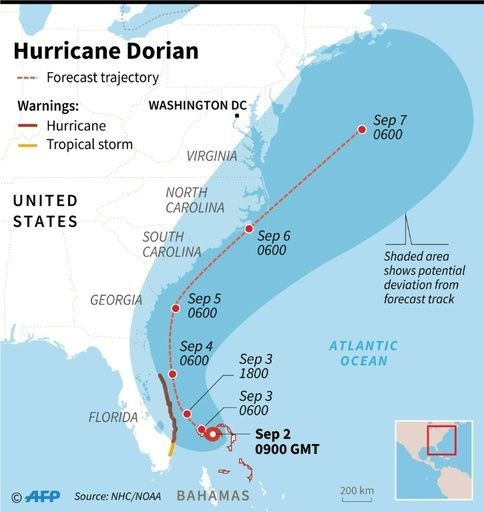Hurricane Dorian Damage Could Cost Insurance $25 Billion, Analyst Says

As Hurricane Dorian, now a Category 4 monster with speeds of up to 240 km/h (150 mph), takes aim at Florida, U.S. insurers are already bracing for losses that might reach $25 billion.
Insurance losses due to hurricane damage are also placing undue strain on the solvency of the insurance industry still recovering from record-setting losses in 2017.
Devastating Dorian, which is currently stalled over The Bahamas where five people have been killed, is still forecast to skirt the eastern coast of the United States as it moves northeast. It will bring powerful winds and dangerous storm surges to states along its path. Florida, North Carolina, South Carolina and Georgia are all bracing for Dorian’s wrath later this week.
Dorian made landfall in the northwestern Bahamas on Sunday. Its maximum sustained wind speeds of 300 km/h (186 mph) tore-off roofs in The Bahamas, upturned cars and triggered massive floods that sent hundreds of Bahamanians to seek safety in shelters, schools and churches.
Dorian is already the second most powerful Atlantic hurricane on record by highest sustained wind speed at landfall. It’s tied for second with the Labor Day hurricane of 1935. The most powerful Atlantic hurricane on record is the Great Hurricane of 1780, whose wind speed at landfall hit 320 km/h.
UBS analysts updated their projections to take into account a much wider potential industry insured loss estimate ranging from $5 billion to $40 billion. They also raised their base case to $25 billion from $15 billion with solvency capital at risk.
UBS estimates more than $70 billion in natural catastrophe losses for 2019. They expressed concern this massive loss might erode excess capital and boost insurance coverage prices.
The record for industry losses due to hurricanes, earthquakes and wildfires was posted in 2017 when the industry had to fork over $135 billion to affected clients. This mountain of loss decreased in 2018 but might increase this year.
Overall losses from worldwide natural catastrophes in 2018 amounted to $160 billion, according to Munich Re, the world’s third largest reinsurer. This sum is 54 percent lower than the $350 billion losses in 2017.
On the other hand, insured losses in 2018 came to $19 billion or 31 percent higher than the average of the prior 10 years from 2008 to 2017. Natural catastrophes in 2018 caused 10,400 deaths compared to 13,000 deaths in 2017. There were 60,000 deaths in the 10 years ending 2017.
© Copyright IBTimes 2025. All rights reserved.




















